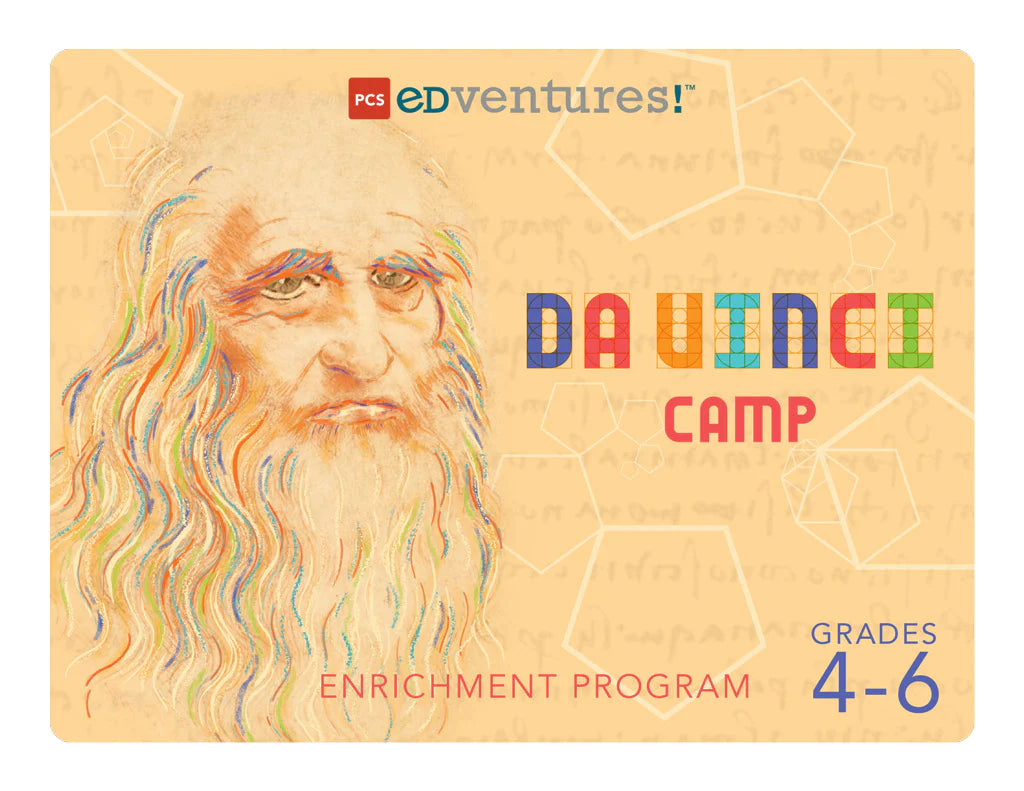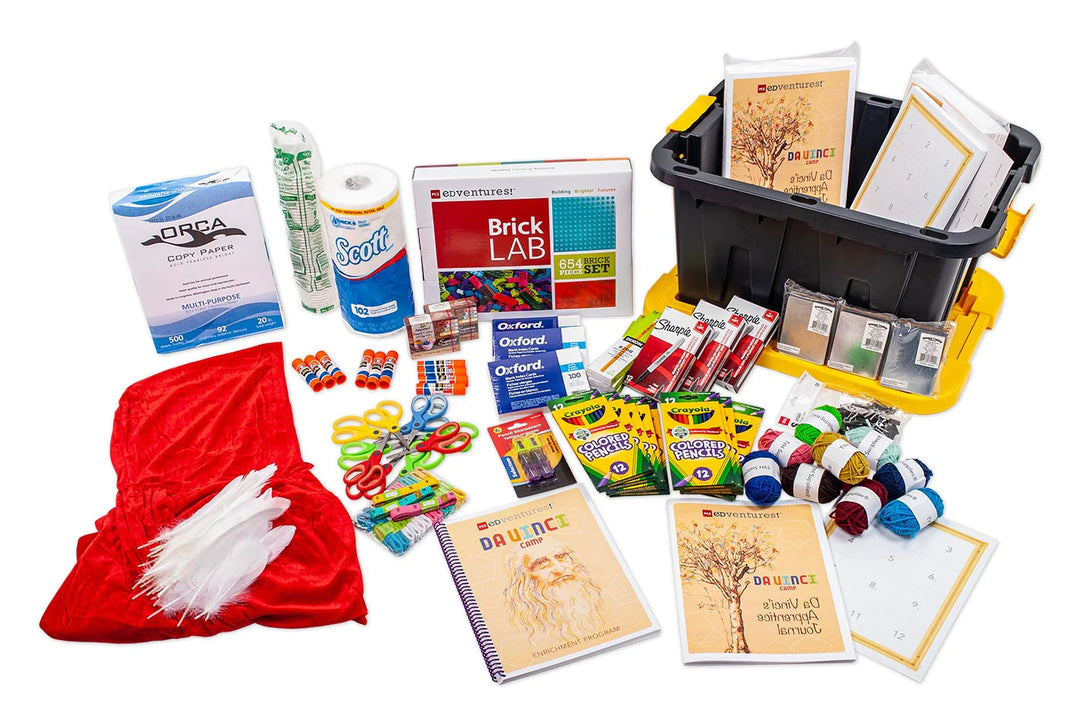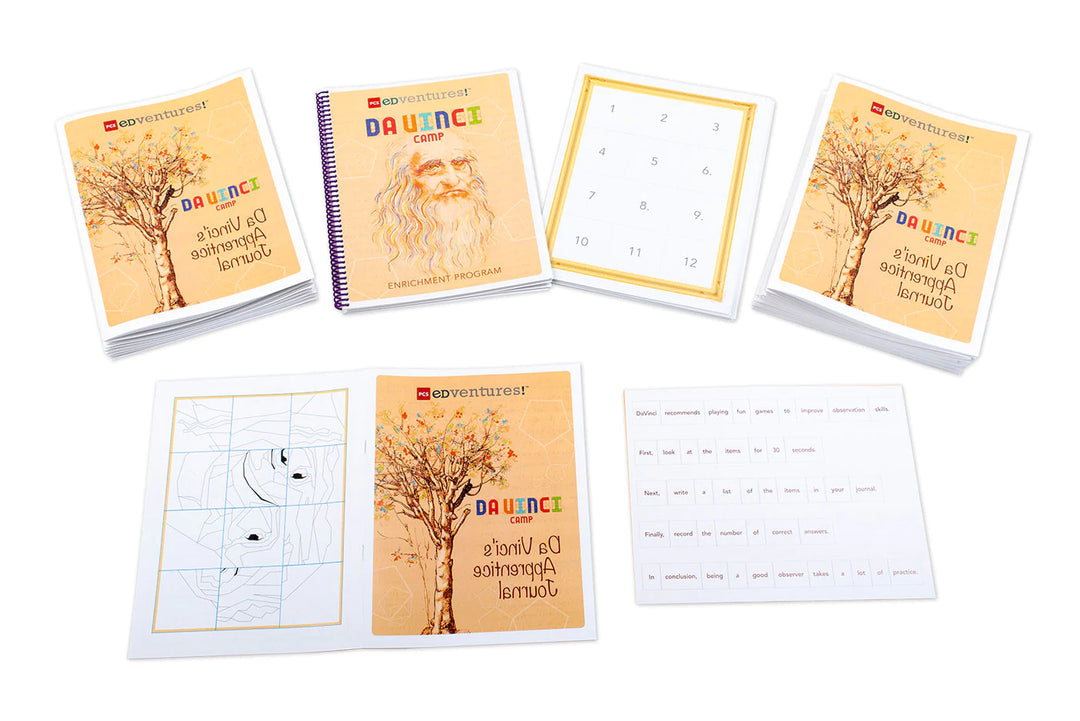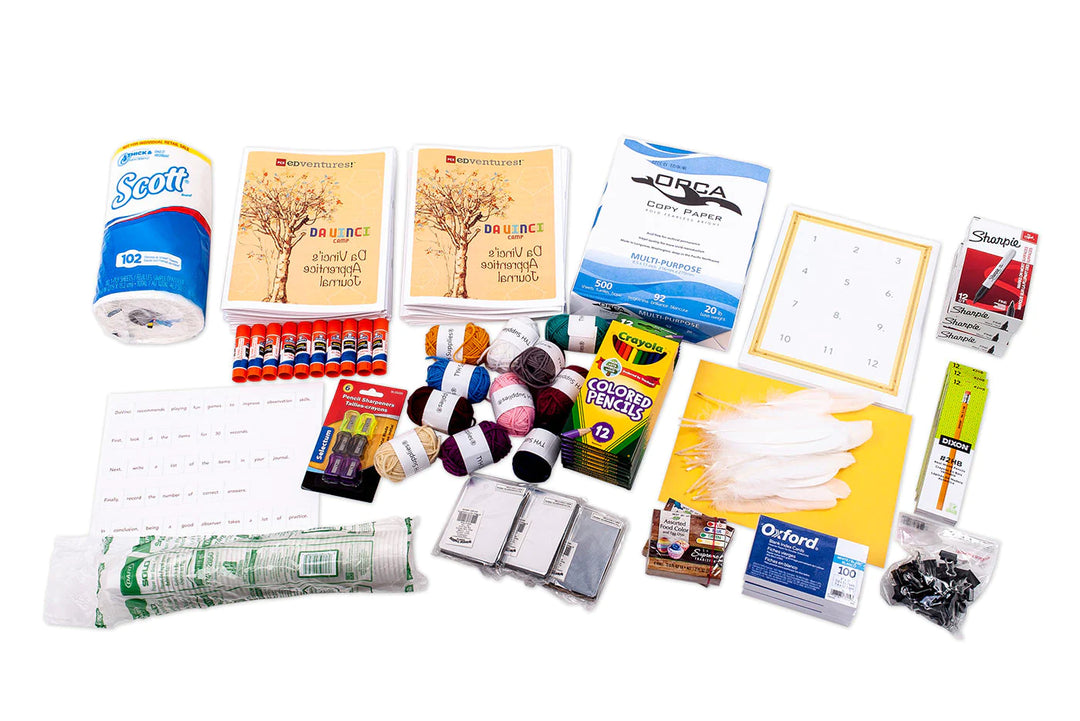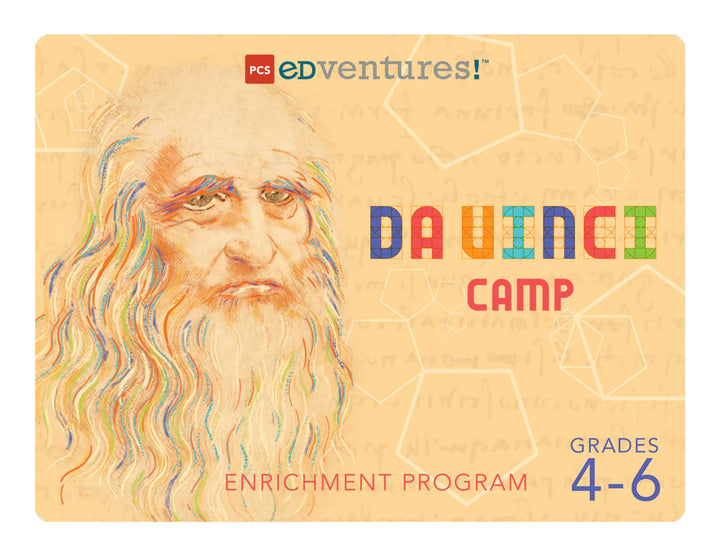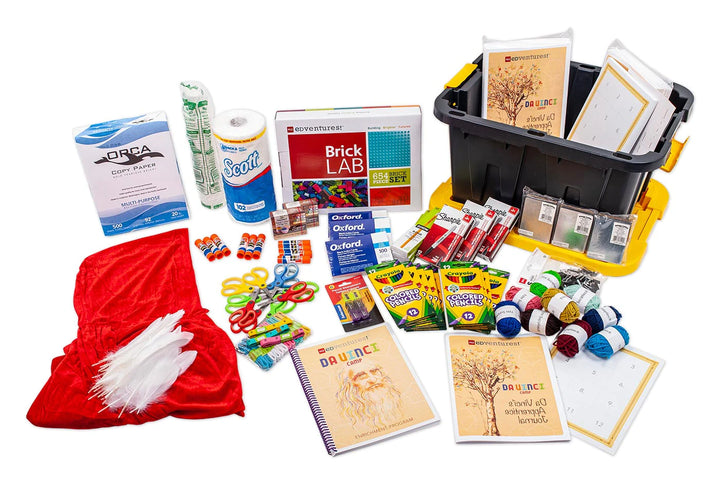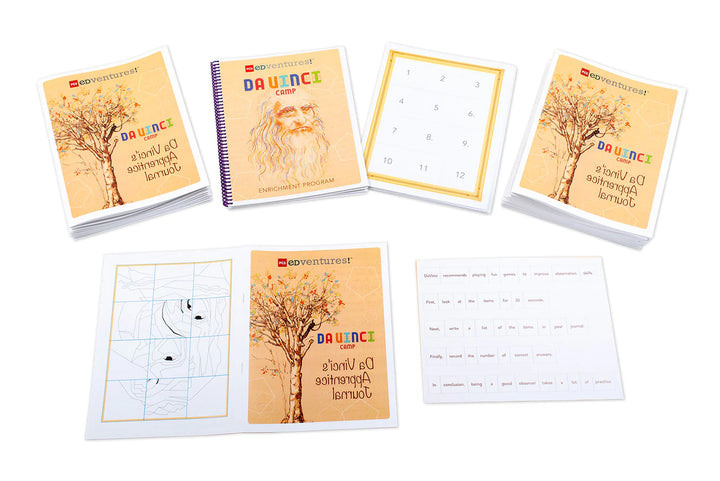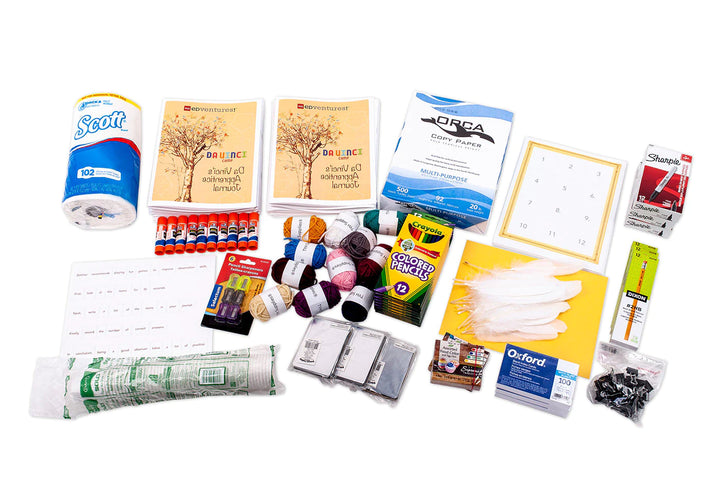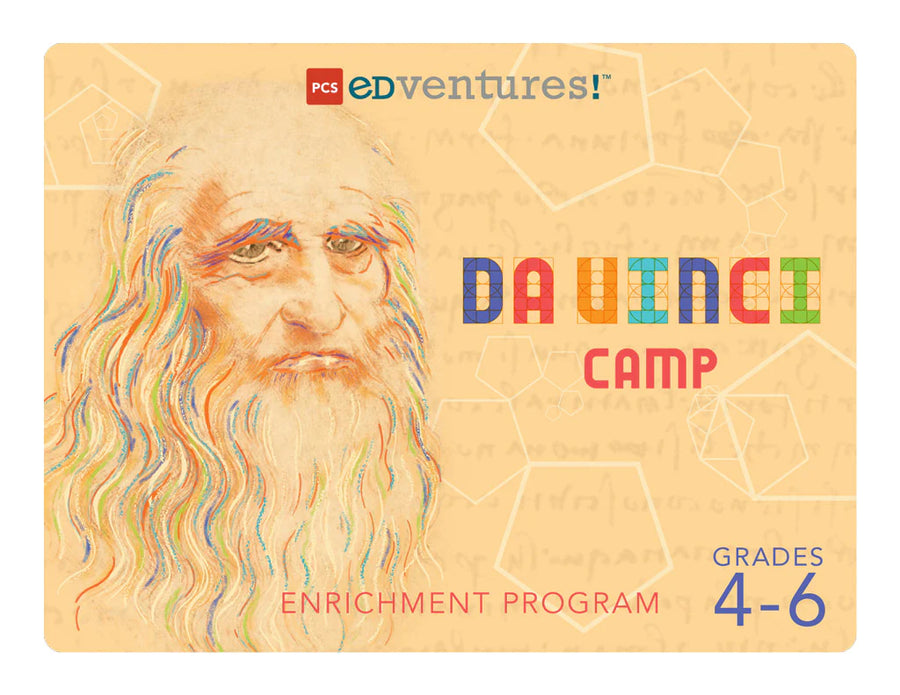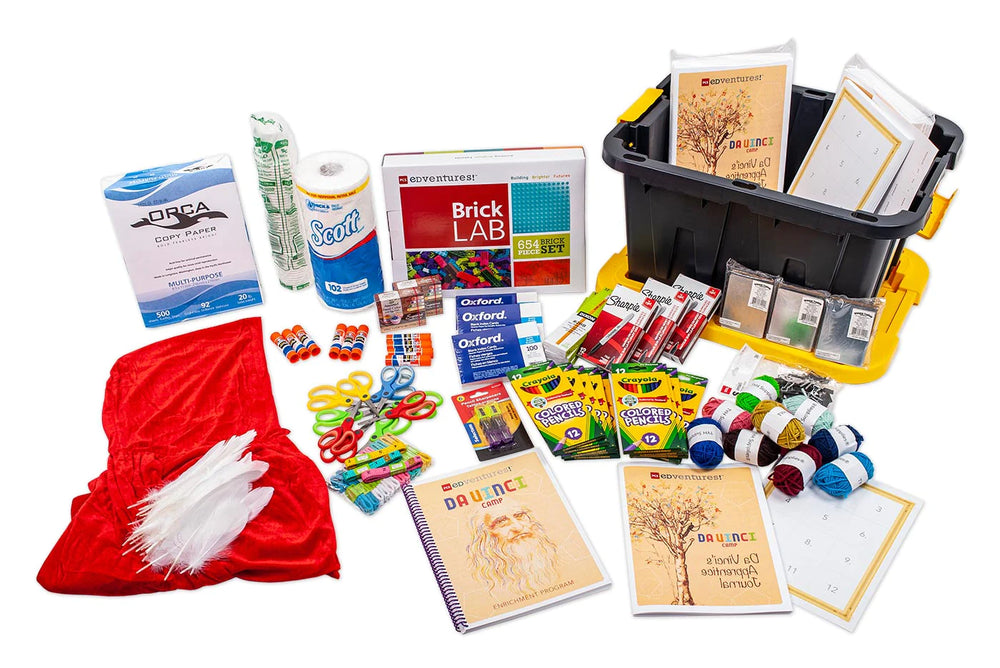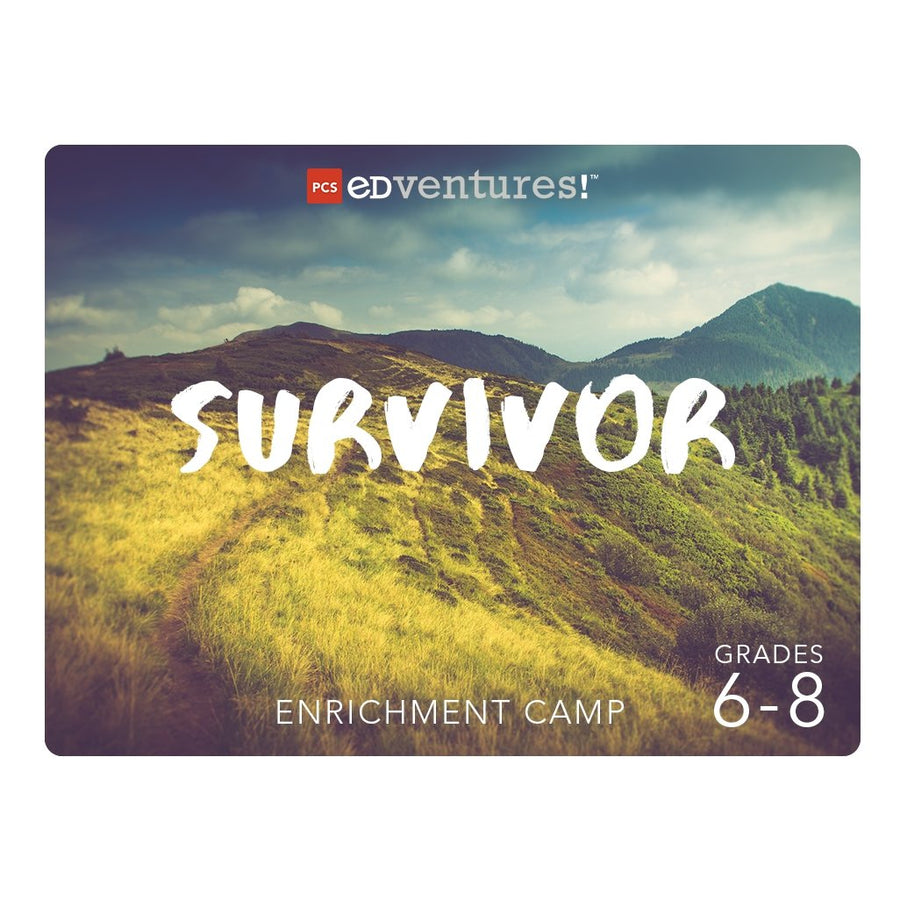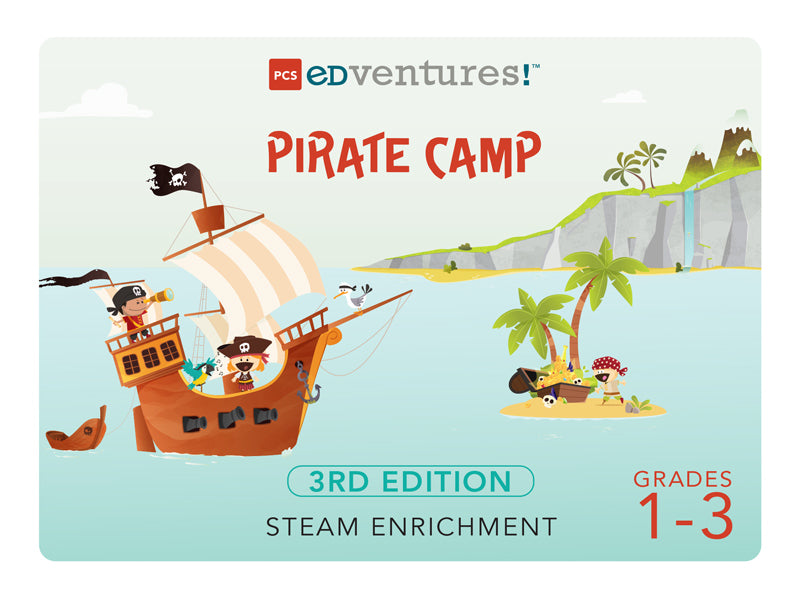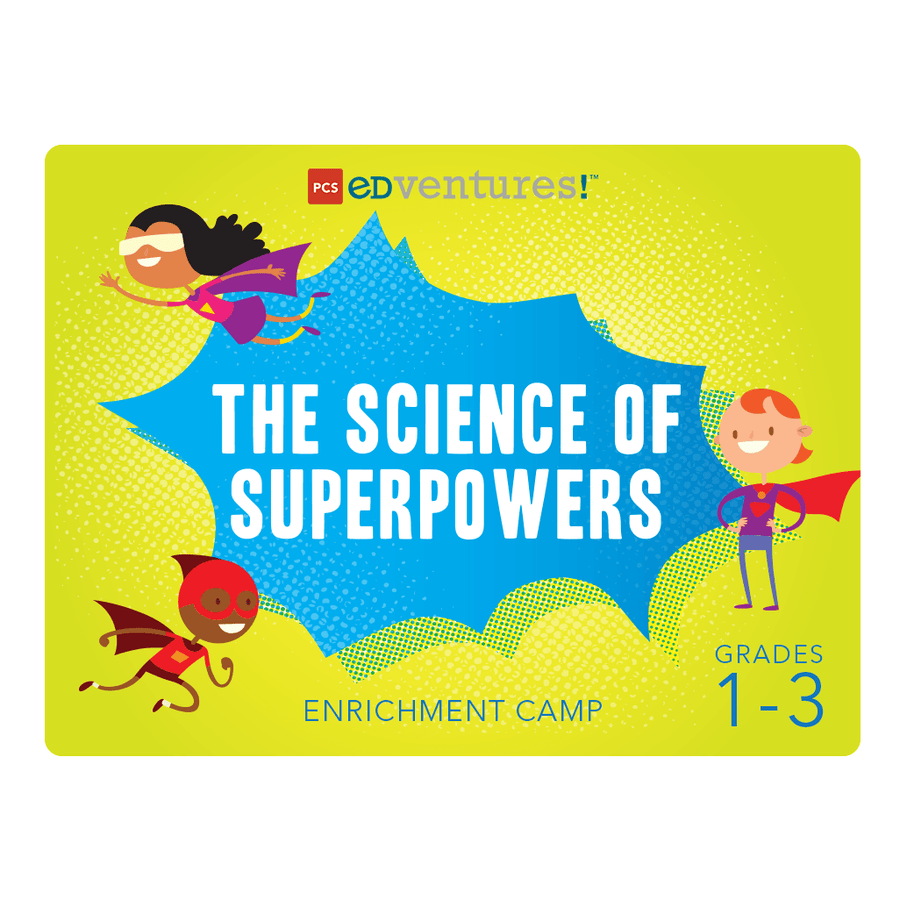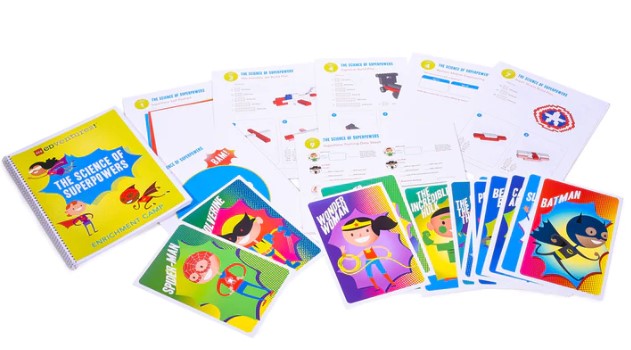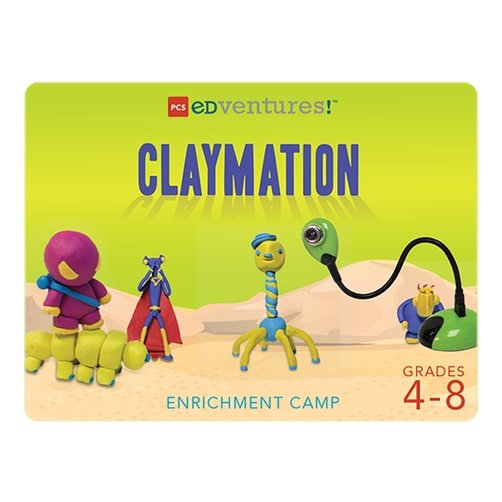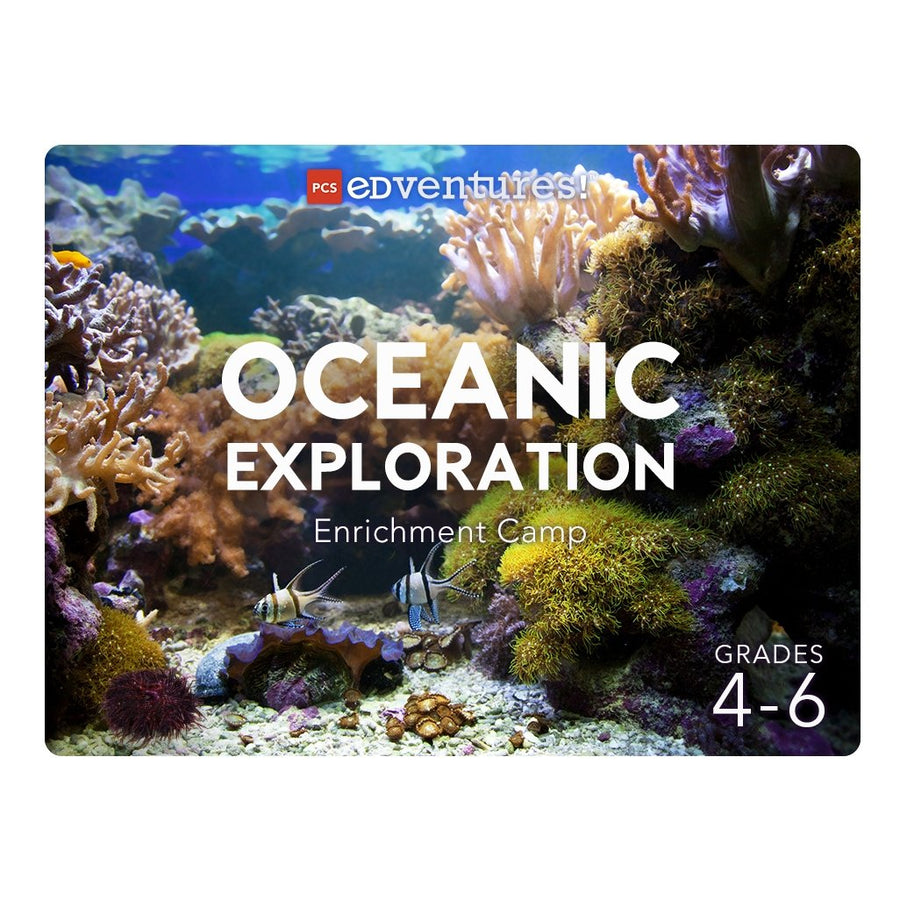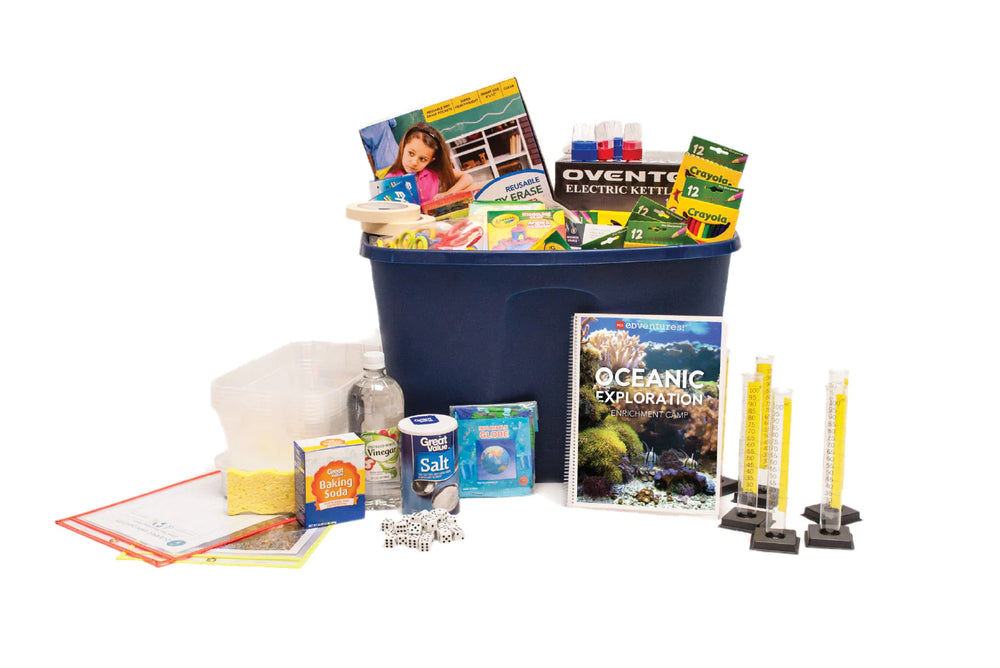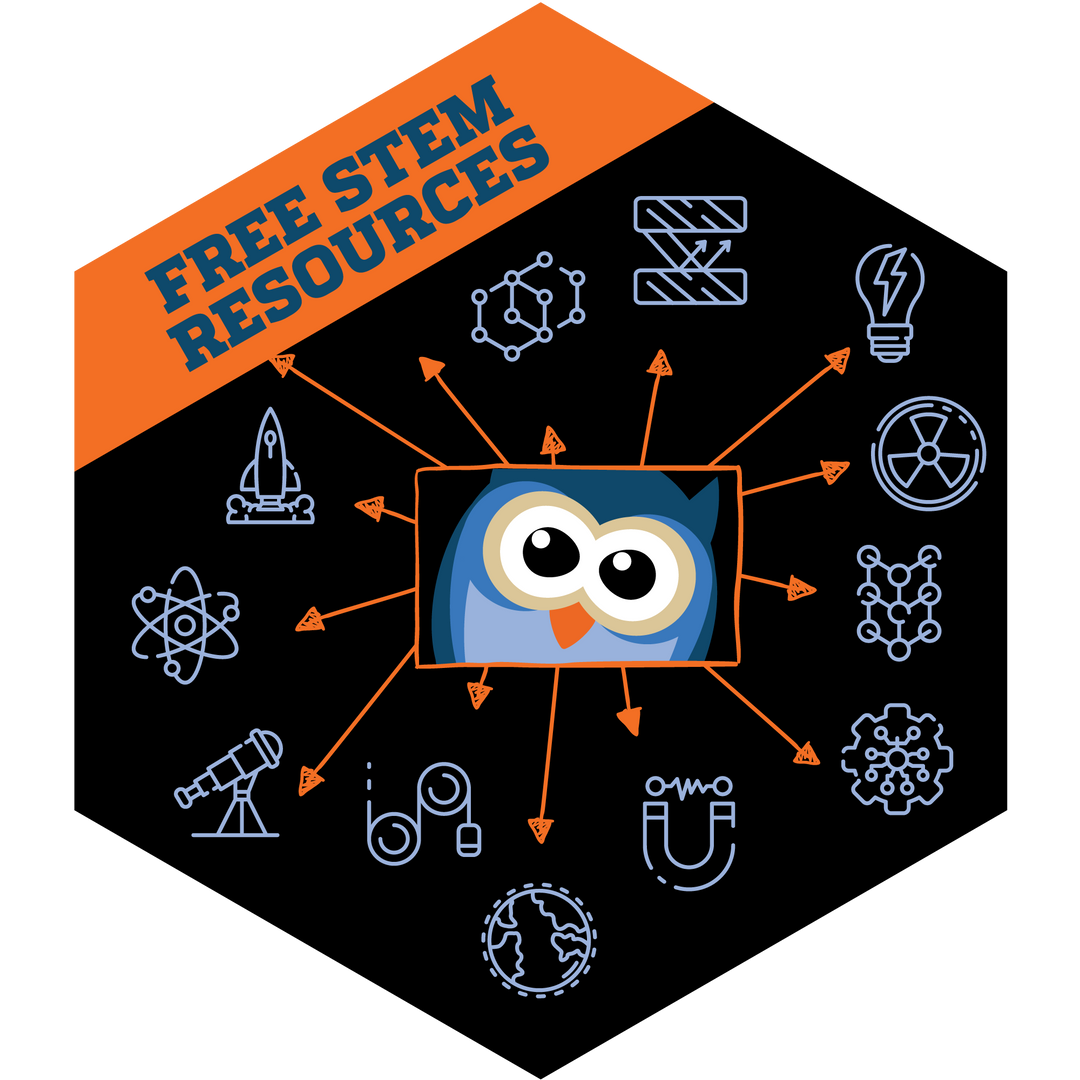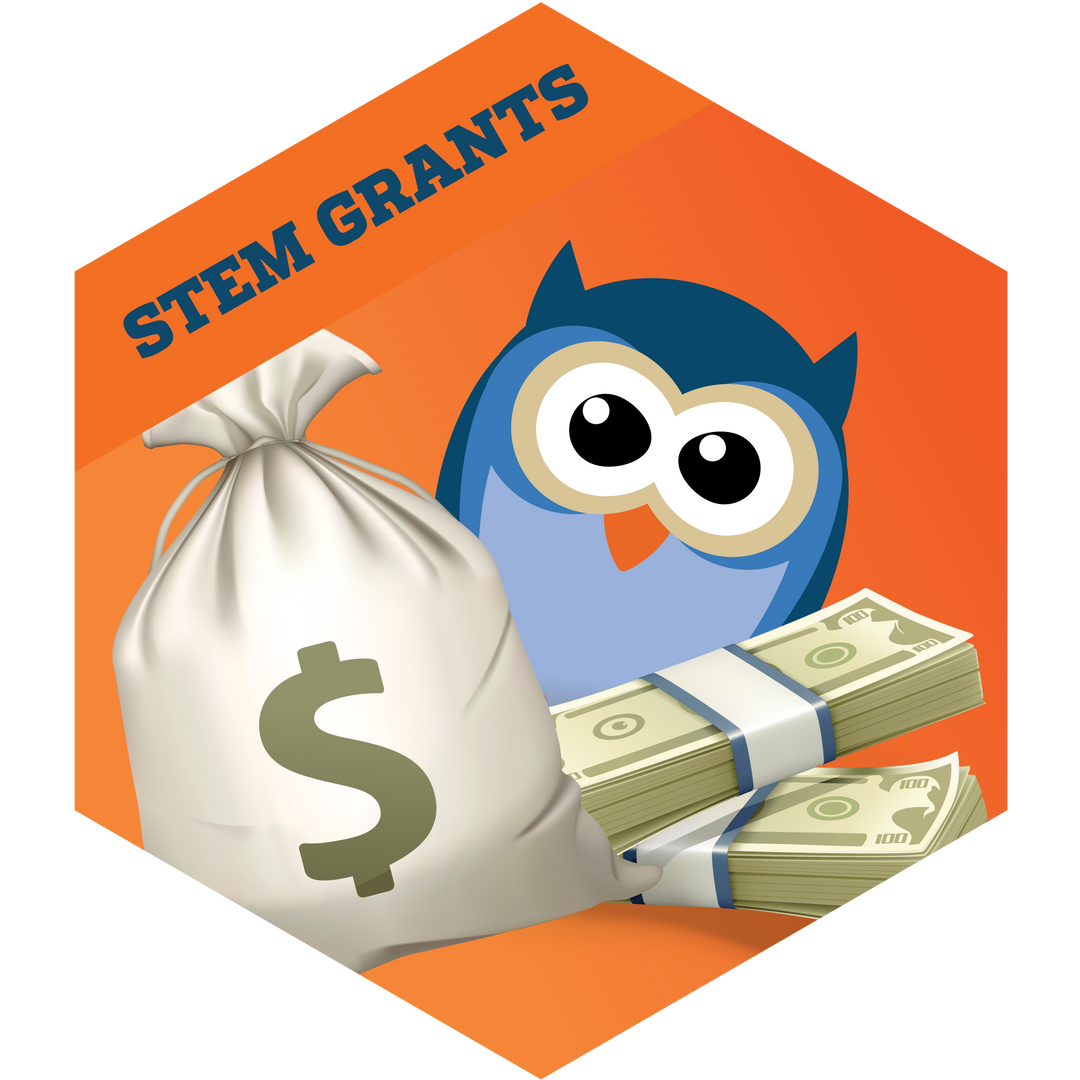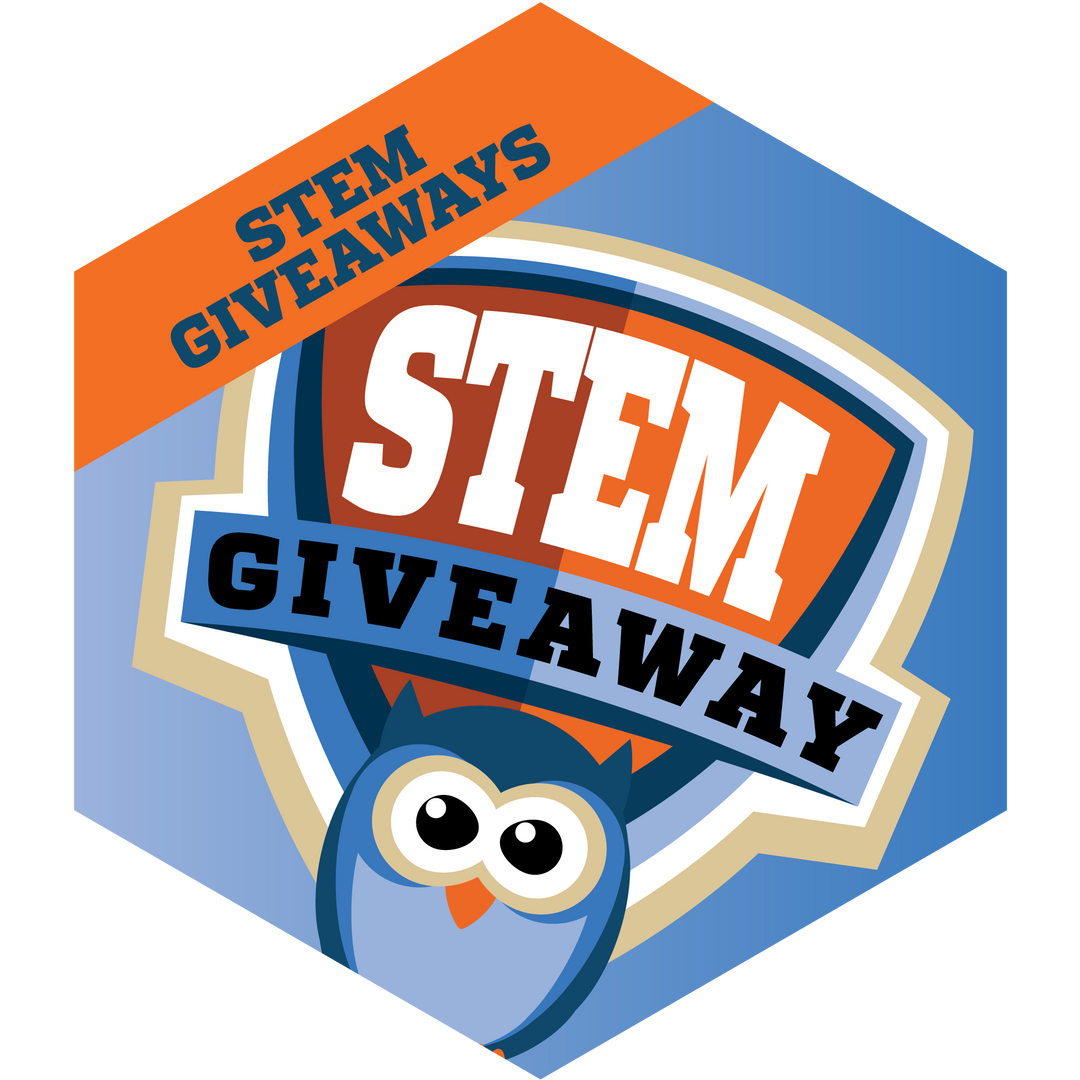Da Vinci Camp
- Grades: 4-6
- Number of Students: Up to 30
- Number of Lessons: 12
- Contact Hours: 12+
- Additional Resources: Camp Flyer, Habits of Mind
Highlights:
Dare to be Like Da Vinci!
Time travel to reveal how Leonardo Da Vinci’s inquisitiveness inspired many of today’s advancements from art to zoology. Learners begin their STEAM journey as apprentices and graduate to Journeypersons. Along the way, they meet Leonardo Da Vinci and engage in hands-on activities that promote creativity, multi-subject integration and collaborative learning. Learners experiment with mirror writing, observe patterns, reveal anatomical proportions and create masterpieces fit for a king. Most importantly, they develop a deeper understanding of the interconnectedness of the world simply by asking, “I wonder why..."
Recommended Settings:
- Summer Camps
- Classrooms
- Before & After-School Programs
- Homeschools
- Out-of-School
Each Activity Guide Includes:
- Schedule
- Opening & Closing Discussion
- Step-By-Step Activity Instructions
- Topic Background & Vocabulary
- Optional Extension Activities
Curriculum or Lesson Topics:
Subject Targets:
- Art/STEAM
- Math Connections
- English Language Arts Connections
- Social Studies/History Connections
Curriculum Topics:
- What’s in a Name?
- Mirror Writing
- How to be a Better Observer
- Fractals
- Universal Emotions
- How to Draw a Selfie
- Emoji Story Books
- Woodpeckers
- Alligators
- 3 Perspectives in Cartography
- Ideal City Design
- Mystery Masterpiece Reveal
Standard Alignments:
Habits of Mind:
16 thinking habits developed by Art Costa and Bena Kallick to empower students to succeed in a 21st-century learning environment.
- Persisting
- Managing Impulsivity
- Listening with Understanding and Empathy
- Thinking Flexibly
- Thinking about Thinking (Metacognition)
- Striving for Accuracy
- Questioning and Posing Problems
- Applying Past Knowledge to New Situations
- Thinking and Communicating with Clarity and Precision
- Gathering Data through All Senses
- Creating, Imagining, Innovating
- Responding with Wonderment and Awe
- Taking Responsible Risks
- Finding Humor
- Thinking Interdependently
- Remaining Open to Continuous Learning
21st Century Skills:
A set of widely-applicable abilities essential for success in the information age.
- Creativity and Innovation
- Critical Thinking and Problem Solving
- Communication and Collaboration
- Information, Media, and Technology Literacy
- Flexibility and Adaptability
- Initiative and Self-Direction
- Social and Cross-Cultural Skills
- Productivity and Accountability
- Leadership and Responsibility
© 2019 Battelle for Kids. battelleforkids.org. All Rights Reserved. Battelle for Kids was not involved in the production of this product and does not endorse it.
Common Core State Standards for Mathematics:
- CCSS.MATH.CONTENT.4.G.A.1: Draw points, lines, line segments, rays, angles (right, acute, obtuse), and perpendicular and parallel lines. Identify these in two-dimensional figures.
- CCSS.MATH.CONTENT.4.G.A.3: Recognize a line of symmetry for a two-dimensional figure as a line across the figure such that the figure can be folded along the line into matching parts. Identify line-symmetric figures and draw lines of symmetry.
- CCSS.MATH.CONTENT.4.MD.A.2: Use the four operations to solve word problems involving distances, intervals of time, liquid volumes, masses of objects, and money, including problems involving simple fractions or decimals, and problems that require expressing measurements given in a larger unit in terms of a smaller unit. Represent measurement quantities using diagrams such as number line diagrams that feature a measurement scale.
- CCSS.MATH.CONTENT.5.G.B.3: Understand that attributes belonging to a category of two-dimensional figures also belong to all subcategories of that category. For example, all rectangles have four right angles and squares are rectangles, so all squares have four right angles.
- CCSS.MATH.CONTENT.6.RP.A.1: Understand the concept of a ratio and use ratio language to describe a ratio relationship between two quantities.
© Copyright 2010. National Governors Association Center for Best Practices and Council of Chief State School Officers. All rights reserved.
Common Core State Standards for English Language Arts:
- CCSS.ELA-LITERACY.RF.4.3.A: Use combined knowledge of all letter-sound correspondences, syllabication patterns, and morphology (e.g., roots and affixes) to read accurately unfamiliar multisyllabic words in context and out of context.
- CCSS.ELA-READING LITERATURE.R.L.4.4: Determine the meaning of words and phrases as they are used in a text, including those that allude to significant characters found in mythology (e.g., Herculean).
- CCSS.ELA-LITERACY.SL.5.5: Include multimedia components (e.g., graphics, sound) and visual displays in presentations when appropriate to enhance the development of main ideas or themes.
© Copyright 2010. National Governors Association Center for Best Practices and Council of Chief State School Officers. All rights reserved.
Next Generation Science Standards:*
- NGSS MS-ETS1-3 Engineering Design
- NGSS MS-LS1-5 Growth and Development of Organisms
- NGSS 3-5-ETS1-1 Engineering Design
- NGSS 3-5-ETS1-2 Engineering Design
- NGSS 3-5-ETS1-3 Engineering Design
- NGSS 4-LS1-1 Structure and Function
*Next Generation Science Standards and NGSS is a registered trademark of WestEd. Neither WestEd nor the lead states and partners that developed the Next Generation Science Standards were involved in the production of this product, and do not endorse it.
National Core Arts Standards:
- VA:Cr1.1.4a: Brainstorm multiple approaches to a creative art or design problem.
- VA:Cr1.1.5a: Combine ideas to generate an innovative idea for art-making.
- VA:Cr1.1.6a: Combine concepts collaboratively to generate innovative ideas for creating art.
- VA:Cr1.2.4a: Collaboratively set goals and create artwork that is meaningful and has purpose to the makers.
- VA:Cr1.2.5a: Identify and demonstrate diverse methods of artistic investigation to choose an approach for beginning a work of art.
- VA:Cr1.2.6a: Formulate an artistic investigation of personally relevant content for creating art.
- VA:Cr2.1.4a: Explore and invent art-making techniques and approaches.
- VA:Cr2.1.5a: Experiment and develop skills in multiple art-making techniques and approaches through practice.
- VA:Cr2.3.6a: Design or redesign objects, places, or systems that meet the identified needs of diverse users.
- VA:Cr3.1.6a: Reflect on whether personal artwork conveys the intended meaning and revise accordingly.
What’s Included:
- Instructor Guide: 1
- Student Journals: 31
- Curriculum Digital Download: 1
- Balls of Yarn: 10
- Binder Clips (36 pack): 1
- BrickLAB BrickPack: 1
- Cape: 1
- Colored Pencils (12 pack): 10
- Copy Paper: (500 sheets): 1
- Feathers: 32
- Food Coloring Packs: 2
- Glue Sticks: 10
- Index Cards (100 pack): 3
- Mirrors: 36
- Rolls of Paper Towels: 1
- Paper Cups: 50
- Pencil Sharpeners: 6
- Pencils (12 pack): 3
- Permanent Markers: 36
- Scissors: 10
- Tape Measures: 15
Note: Due to production time, this item typically ships 2-3 weeks after receipt of the order. During peak season, April-June, lead time is around 6 weeks. Please plan and order accordingly.


